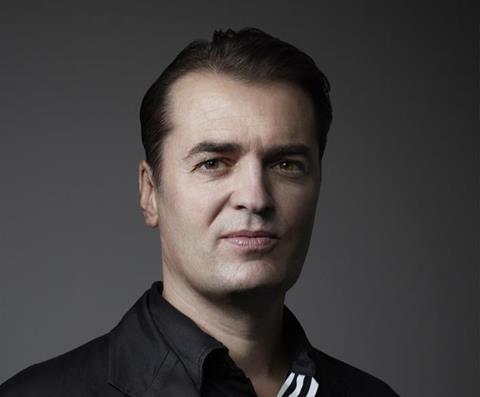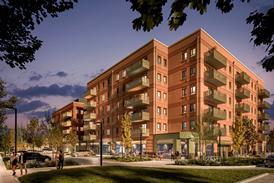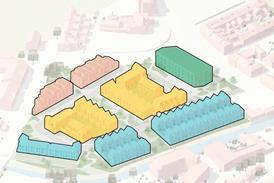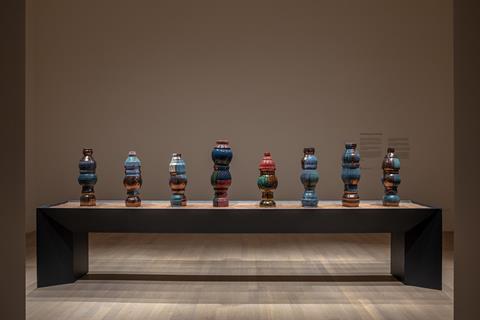We need an architectural discourse that incorporates the art and science of construction, alongside broader intepretations of what constitutes architecture, writes Ben Flatman

Patrik Schumacher has shared a post on social media despairing at what he perceives as the lack of architecture at this year’s Venice Architecture Biennale. “Most national pavilions… refuse to show the work of architects, or any architecture whatsoever,” he says, before adding that “What we are witnessing here is the discursive self-annihilation of the discipline”.
Never one to shy away from controversy, his argument is that too much architectural discourse at the Biennale - and more generally - has become dominated by what he sees as “one-liner” and “virtue signalling” conceptual installations, often themed around recycling, human migration, and identity politics.
At first glance this reads as a standard “anti-woke” position, and hardly comes as a surprise from the man who has long taken pleasure in provoking the left-liberal architectural establishment. His previous interventions have included making the case for privatising social housing and building over Hyde Park.
Schumacher’s earnestly neo-liberal economics seem almost quaintly old-fashioned in the current global context. But if we put aside the culture-wars rhetoric, is there more than a kernel of truth in his latest outburst?
This year’s Biennale had been billed as the first to be focused on Africa, but Schumacher decries what he sees as the almost total absence of actual African architecture (although he admits to only having visited 12 pavilions and then giving up). “Without David Adjaye’s work… there would be no African architecture,” he writes. “I was curious about African architects and African architecture but I am no wiser after seeing the show.”
Is this fair criticism? When I recently interviewed some of the team behind the British Pavilion, I was struck by the way in which much of the work looked as if it might just as happily have sat within an art or contemporary craft exhibition.
Many of the contributors had clearly been selected because they practiced in that space between architecture, built-environment activism, and art. And the focus on Africa had also been very loosely interpreted, to embrace the continent’s diaspora. Only Sandra Poulson’s installation, focused on Angola, appeared to make a direct link to a specific African context.
There is a lot happening in African architecture, from a rediscovery and reappraisal of its own vernacular and 20th century modernist heritage, to contemporary practice and Lesley Lokko’s own school of architecture in Ghana. The continent is too vast and diverse to even attempt to summarise its architectural contribution here.
But does any of this matter? Maybe it’s not for Schumacher (or me) to pass judgement on the extent to which the Biennale reflects what’s happening in current African architectural practice.
Architecture touches on almost every aspect of human life and activity. Surely then, it is not only appropriate, but essential that an architectural exhibition embraces an interpretation of architecture that extends beyond buildings and construction.
But if architecture can be interpreted as anything related to material culture and the way in which people inhabit space – essentially cultural studies in the built environment – when does the science and art of construction actually get a look in?
Schumacher identifies what he sees as this “anti-architectural” culture as emanating from the elite schools. “Perhaps that’s why architectural design has disappeared from most (especially the most prestigious) schools of architecture.”

He also highlights the Chinese pavilion as one of the few where – in his view – you can see actual architecture. He sees it as a symptom of a “shamefaced and guilt ridden” Western architectural culture in which “the design and construction of buildings [is] only an occasion for bad conscience”.
Part of the intention behind the British Pavilion was explicitly to critique the type of architectural practice that Schumacher exemplifies. The parametricism that he touts as being at the forefront of architectural discourse has been widely critiqued and even derided for its seeming rejection of context or cultural awareness - the archetypal architecture of anywhere and nowhere. For some, it’s Schumacher’s view of what constitutes architecture that is actually the turn-off.
Maybe one of the lessons of the Biennale is that a lot of architects actually seem to have very little to say about the big issues. Beholden to the relentless and seemingly irresistible dynamics of corporate capital, and cowed by the world’s seemingly intractable problems, mainstream architects almost everywhere seem to have retreated from polemics and critical stances.
Perhaps this apparent silence might be best addressed by - as Schumacher suggests - showing the world what architects are actually designing and building. Then at least the public and profession might have a clearer idea of the issues architects are confronting, as well as developing a better understanding of where they are succeeding and failing. The Venice exhibition on proposals for the dystopian Neom scheme in Saudi Arabia possibly illustrate well the value of such a straightforward approach.
To bridge the divide between architectural practice, academia, and cultural discourse, a more inclusive and holistic approach is needed. The Venice Architecture Biennale can still play a pivotal role in achieving this by expanding its scope. It should continue to incorporate discussions on pertinent socio-political issues affecting the built environment, while also exhibiting exemplary architectural works.
By creating platforms for dialogue and collaboration between practitioners, academics, and the public, the Biennale can foster an informed and relevant architectural discourse that also has space for the very particular considerations that inform architectural practice. An Architecture Biennale worthy of its name must surely always include considerations of technological, economic, environmental and regulatory contexts, alongside exploration of current thinking on aesthetics and construction.
Regardless of the current UK focus on retrofit, the prevailing global preoccupation of most architects is with the design of new buildings - not least in Africa. The global construction juggernaut shows no sign of slowing and by pretending otherwise, or choosing to look away from what actually constitues architectural practice, events such as the Biennale risk accusations of burrying their heads in the sand.
Patrik Schumacher’s critique of the Venice Architecture Biennale sheds light on the challenges faced by the architectural community. While his anti-woke stance may be divisive, it is crucial to acknowledge the underlying issues he addresses. By embracing a more inclusive approach and encouraging dialogue, we can bridge the gaps between architectural practice, academia, and cultural discourse, leading to a more vibrant and impactful debate around architecture.
Also read >> Schumacher blasts ‘lack of architecture’ at Venice Biennale
Also read >> The British Pavilion at the Venice Architecture Biennale: Dancing Before the Moon






















5 Readers' comments